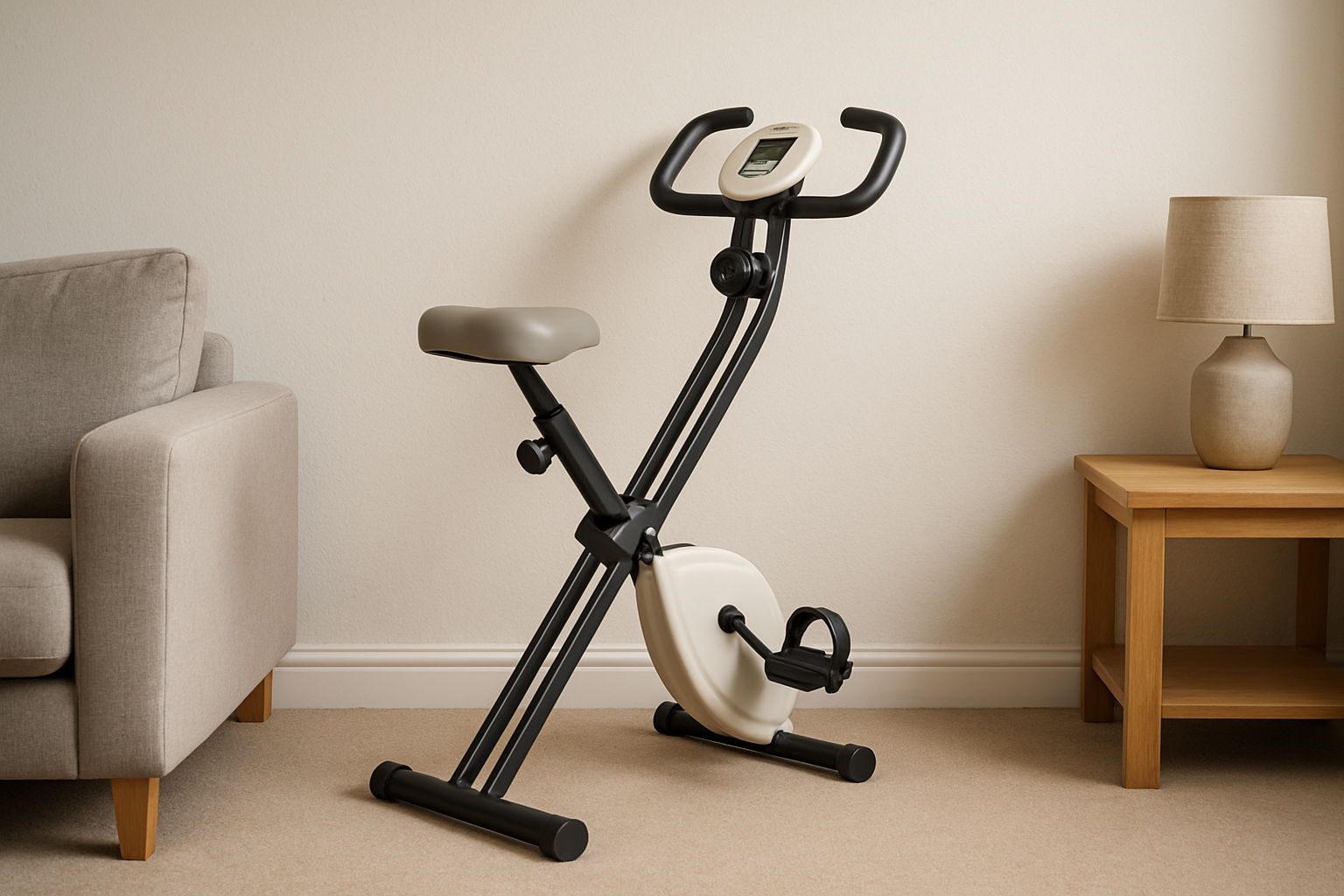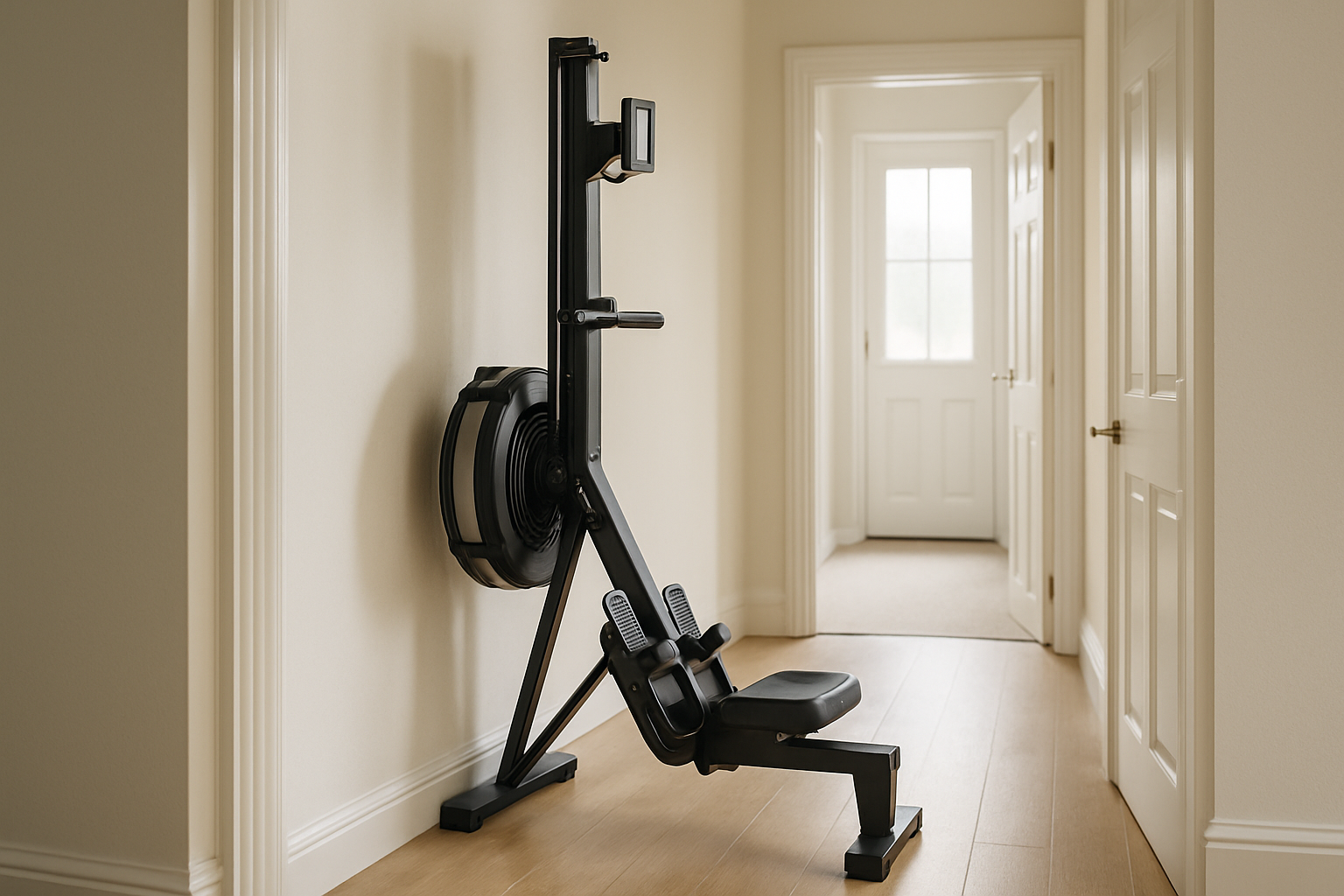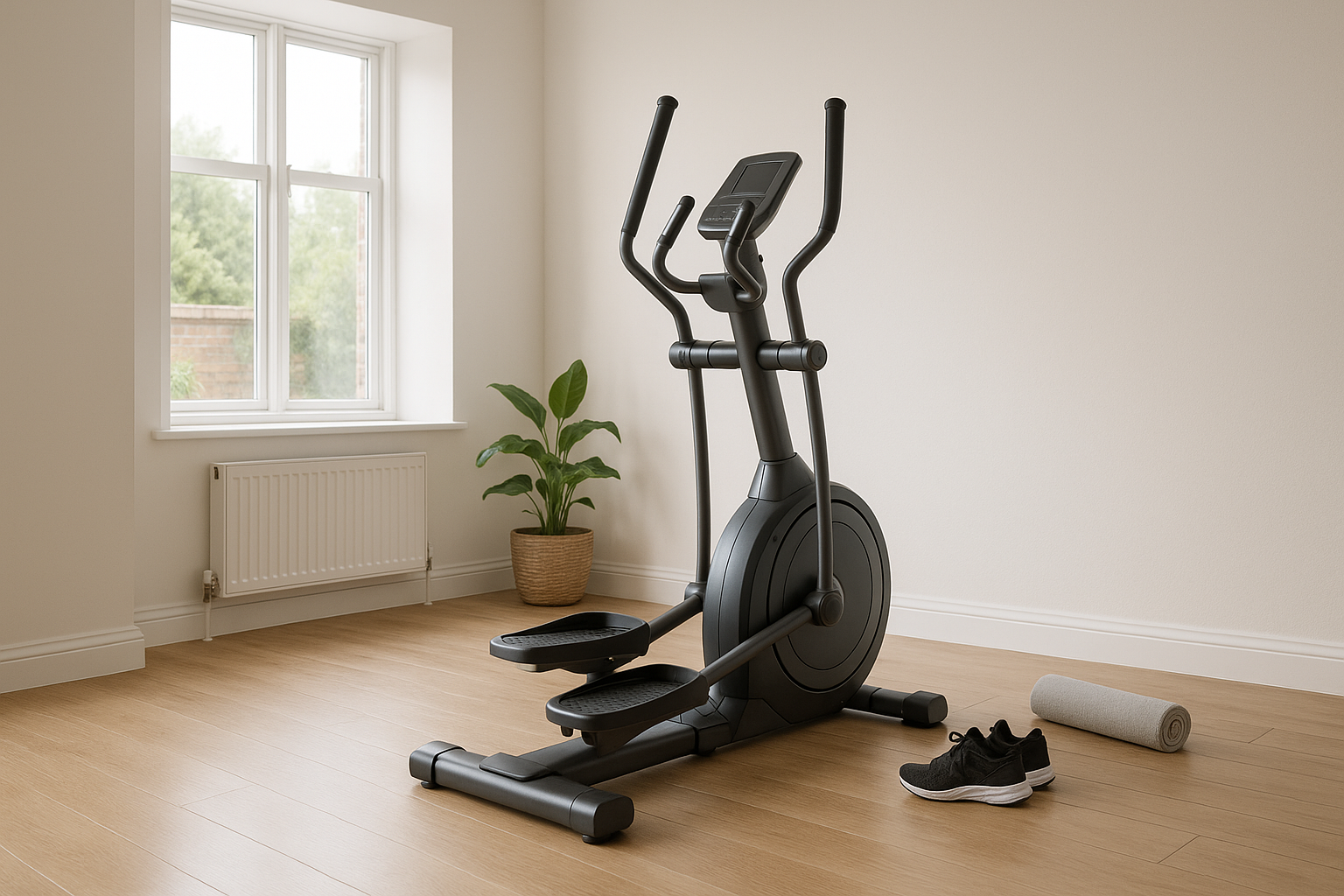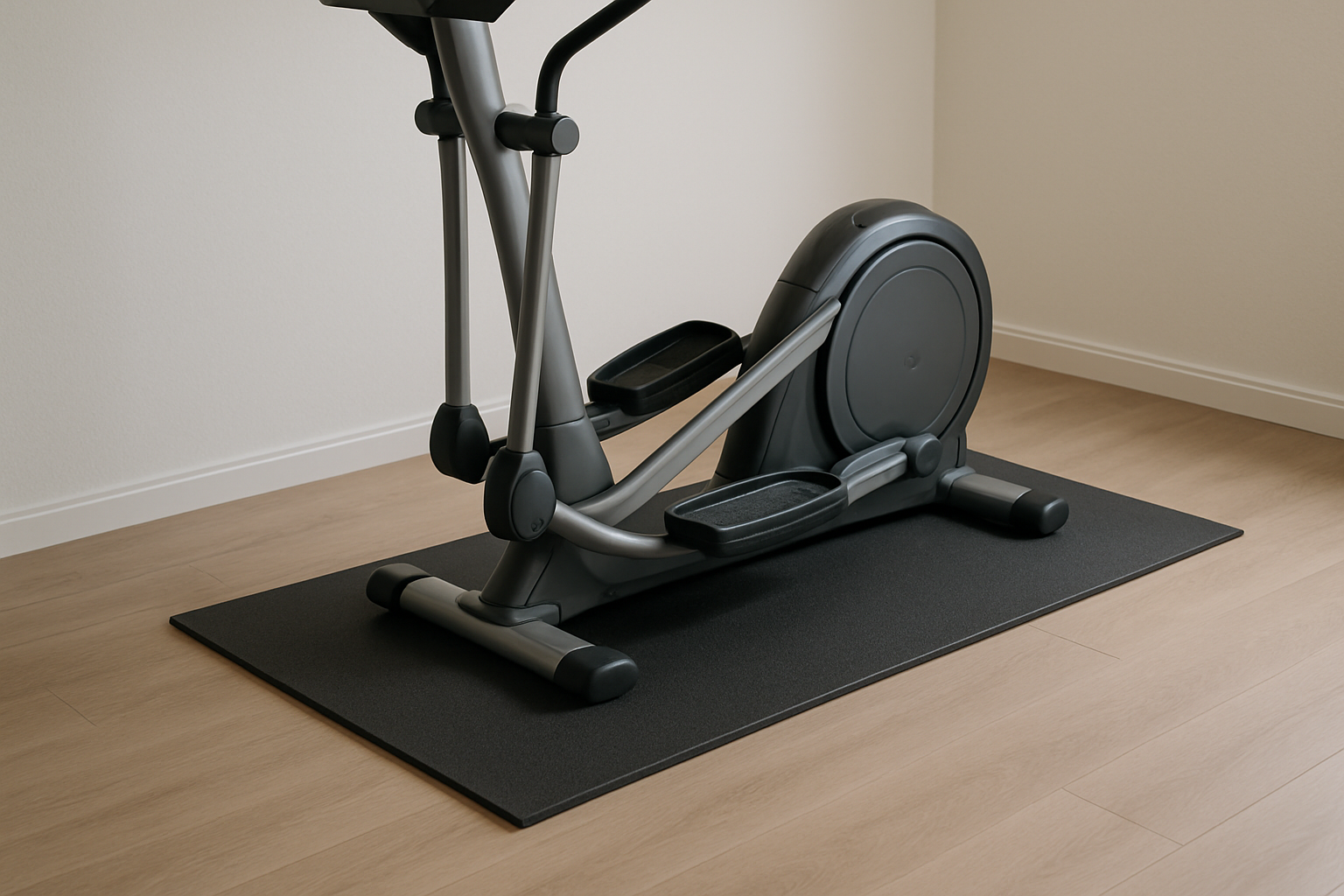Exercise Bike vs Rowing Machine vs Cross‑Trainer: Best for UK Homes?
Reading time: 11 minutes • Last updated: September 2025
Exercise bike vs rowing machine vs cross trainer: choose the best cardio machine for your UK home
Choosing between an exercise bike, a rowing machine, and a cross-trainer can be confusing. This guide compares calorie burn, impact on joints, space and noise, budgets, and who each machine suits. If you’re weighing up exercise bike vs rowing machine vs cross trainer, you’ll get clear answers, practical tips, and UK‑focused advice to help you decide with confidence.
Quick answer: Rowers give the most total-body work in the smallest footprint if you’ve got the length. Bikes are the easiest to learn and usually the quietest for flats. Cross-trainers offer a balanced, low‑impact option with a slightly larger footprint. All three can support weight loss and fitness if you train consistently and progressively, aligned with the UK Chief Medical Officers’ activity guidelines.
- TL;DR
- Rowing is full‑body and time‑efficient; biking is the simplest and quietest; cross‑trainers are joint‑friendly with an upright posture.
- Estimated calorie burn (70–80 kg user, moderate effort): bike ~400–600 kcal/hour, rower ~500–700 kcal/hour, cross‑trainer ~450–650 kcal/hour. Actual burn varies by intensity and technique.
- For small UK flats: bikes are shortest; rowers store upright or split; cross‑trainers need ceiling clearance and more floor area.
- Noise: magnetic bikes are quietest; air rowers are loudest; cross‑trainers sit in the middle. Floor mats help in upstairs flats.
- Budgets: entry (~£200–£400), mid (~£400–£800), premium (≥£800). Prioritise fit, warranty, and resistance quality over extras.
- Beginners: bike for easy access; Intermediate: rower for full‑body stimulus; Joint‑sensitive: cross‑trainer for low impact.
Disclaimer: If you have a medical condition, are pregnant, or are new to exercise, speak to your GP or a qualified professional before starting a new programme. Progress gradually, use good technique, and stop if you feel unwell.
Exercise bike vs rowing machine vs cross trainer: head‑to‑head
Below is a practical comparison based on comfort, calorie burn potential, impact, learning curve, space, and noise—key factors for UK home use.
Calorie burn and fitness returns
All three can deliver moderate to vigorous activity recommended by the UK Chief Medical Officers (150–300 minutes weekly moderate or 75–150 minutes vigorous, plus strength work) [CMO Guidelines; NHS]. Typical hourly energy expenditure at moderate intensity for a 70–80 kg adult:
- Rowing machine: ~500–700 kcal/hour (full‑body contribution can increase oxygen demand)
- Cross‑trainer: ~450–650 kcal/hour
- Exercise bike: ~400–600 kcal/hour
Differences shrink or widen based on effort, cadence/stroke rate, resistance, and technique. A well‑paced cycling interval can easily out‑burn an easy row. Evidence shows modality choice matters less than sustaining sufficient intensity and duration [e.g., PubMed: modality and energy cost].
Impact on joints and injury risk
- Exercise bike: Very low impact; seated posture reduces load through knees and ankles. Good for beginners or those easing back from impact‑related niggles.
- Rowing machine: Low impact but requires hip and spine flexion; poor form can irritate lower back. Technique and progressive loading are key.
- Cross‑trainer: Low impact with upright posture; dispersed load through arms and legs can feel joint‑friendly.
Whichever you choose, keep cadence smooth, avoid excessive resistance early on, and warm up 5–10 minutes. The NHS emphasises gradual progression and listening to your body [NHS Warm‑up].
Muscles worked
- Rowing: Legs drive, core transfers force, back and arms finish—true full‑body stimulus.
- Cross‑trainer: Quads, glutes, calves with upper‑body push–pull; balanced total‑body hit.
- Bike: Primarily lower body (quads, glutes, calves); core engaged for posture.

Learning curve and comfort
- Bike: Easiest to learn. Key is saddle height and reach. Clip‑in pedals optional.
- Rower: Technique matters (catch–drive–finish–recovery). A few sessions to feel smooth, but highly rewarding.
- Cross‑trainer: Intuitive stepping; some need time to coordinate handles and stride.
Space, footprint, and storage
- Exercise bike: ~1.2 m × 0.6 m; easy to place against a wall; many have transport wheels.
- Rowing machine: ~2.2–2.4 m × 0.5 m in use; stores upright or splits in two; narrow but long.
- Cross‑trainer: ~1.6–1.8 m × 0.7–0.8 m with 2.0+ m ceiling clearance (for taller users).

Noise in shared homes
- Magnetic exercise bikes: Very quiet (often ~40–50 dB). Good for late‑evening rides.
- Rowers: Air rowers are the loudest (~60–70 dB); magnetic or water rowers are quieter.
- Cross‑trainers: Moderate noise from moving arms and rails; magnetic resistance helps.
Use a dense rubber mat on suspended floors to reduce vibration transfer to neighbours.
Connectivity and training features
- Bikes: Often offer cadence, resistance levels, Bluetooth, and app compatibility (Zwift, Peloton app, etc.).
- Rowers: Power (watts), split times, stroke rate; good for interval training.
- Cross‑trainers: Programmes for intervals/hills; dual‑grip heart‑rate sensors (accuracy varies).
Who should choose what?
- Choose an exercise bike if: you’re a beginner who wants a simple, low‑impact start; you live in a small flat; you train late and need quiet; you prefer seated workouts.
- Choose a rowing machine if: you want the best full‑body cardio in limited width; you enjoy interval training; you’re happy to learn technique.
- Choose a cross‑trainer if: you want upright, joint‑friendly movement; you like engaging upper and lower body without a learning curve; you’ve got a bit more floor and ceiling space.
Weight loss note: Any of the three can support fat loss if you combine consistent training with an appropriate calorie deficit and adequate protein. The NHS provides practical, evidence‑based guidance on weight management and healthy eating [NHS Weight Loss Plan].
How to choose: buyer’s checklist
- Fit and ergonomics: Does the saddle/handle reach adjust to your height? Can you row through full range without rounding your back? Do cross‑trainer pedals feel natural?
- Resistance quality: Smooth magnetic systems are quieter; air rowers scale with effort (great for intervals); flywheel weight matters for bikes.
- Console and metrics: Prioritise clear speed/cadence/watts/HR over flashy graphics. Bluetooth is useful but not essential.
- Footprint and storage: Measure your space. Check upright storage for rowers and transport wheels for bikes/cross‑trainers.
- Noise and neighbours: Choose magnetic resistance and a mat in upstairs flats.
- Build and warranty: Look for a realistic max user weight (≥120 kg is reassuring), solid frame, and 1–2 years warranty on parts. Read small print for wear items.
- Budget realism: Spend for durability and resistance feel. Skip unnecessary extras if the core ride/row/stride isn’t right.
- Maintenance access: Can you reach the chain/belt area? Are parts available in the UK?
Common mistakes to avoid
- Buying the biggest screen instead of the best drive/resistance.
- Ignoring ceiling height for cross‑trainers (allow your height + pedal rise + clearance).
- Rowing without technique—learn the sequence before heavy intervals.
- Under‑estimating noise in echoey rooms; mats make a real difference.
Space, noise and setup for UK homes
Most UK flats can accommodate a compact bike or a rower stored upright. Cross‑trainers need more headroom and depth. Consider:
- Flooring: A 6–10 mm rubber mat reduces vibration and protects flooring.
- Power: Self‑powered consoles are flexible; mains‑powered screens need a socket.
- Assembly: Bikes: 30–60 minutes; Rowers: 20–45 minutes; Cross‑trainers: 60–120 minutes.
- Noise control: Choose magnetic resistance; add felt pads under mat corners; avoid late‑night air rowing if walls are thin.

Budget tiers and good‑value picks
Prices are indicative and subject to change.
Entry level (~£200–£400)
- Bike: Basic magnetic resistance, lighter flywheels. Good for beginners and short sessions.
- Rower: Compact magnetic rowers are quieter but may feel lighter at high rates.
- Cross‑trainer: Smaller stride lengths; check stability and user weight ratings.
Mid‑range (~£400–£800)
- Bike: Heavier flywheels, better adjustability, and Bluetooth.
- Rower: Air or water resistance with sturdier frames. For a popular air model, see our BodyMax Oxbridge HR Air Rowing Machine review.
- Cross‑trainer: Smoother stride and improved stability. If you’re exploring hybrids, our JLL CT100 review covers a 2‑in‑1 option.
Premium (≥£800)
- Bike: Studio‑grade feel, power metrics, robust frames.
- Rower: Commercial‑grade builds with precise metrics and long warranties. Explore our curated picks in best rowing machines.
- Cross‑trainer: Longer strides, heavier drives, excellent stability for heavier users.

Maintenance and longevity tips
- Bikes: Wipe sweat; check pedal tightness weekly; keep seat rails clean; if chain‑driven, lube per manual.
- Rowers: For air rowers, dust the flywheel grill; for chain drives, light oil every few weeks; keep the rail clean for smooth seat travel.
- Cross‑trainers: Tighten bolts after the first 10 hours; periodically check track rollers and apply silicone if specified.
- All: Place on a mat to protect floors; register warranty; keep receipts.
Alternatives and when they make more sense
- Treadmill: Best if you specifically want to run. See our structured treadmill 5k training plan to get started.
- Compact strength kit: If cardio is covered outdoors, direct funds to resistance training for health and body composition. Our guide on how to build a home gym lays out smart priorities.
Quick comparison (plain text)
Biggest total‑body stimulus: Rowing. Quietest for flats: Magnetic bike. Lowest learning curve: Bike. Most upright, joint‑friendly: Cross‑trainer. Smallest in use: Bike. Easiest to store: Rower (upright) or compact bike. Loudest: Air rower.
Troubleshooting: quick fixes
- Squeaks/rattles: Tighten bolts; add a drop of silicone (if manual allows) to contact points; ensure the mat is flat.
- Uneven feel on cross‑trainer: Check pedal bolts and rail cleanliness; inspect roller wear.
- Slipping on a bike: If belt drive, contact support; if chain, tension per manual.
- Rowing back discomfort: Reduce stroke rate, focus legs first, maintain neutral spine; consider a technique refresher video and shorter sets.
FAQs
Which burns more calories: bike, rower, or cross‑trainer?
At similar effort, rowing and cross‑training often edge out cycling due to upper‑body involvement, but the gap is small. Your intensity matters most.
What’s best for bad knees?
All three are low impact. Many find bikes and cross‑trainers most knee‑friendly; rowers can be fine with controlled knee flexion and proper form. Start with lower resistance and short sessions.
Is a rowing machine good for weight loss?
Yes—full‑body demand makes rowing time‑efficient. Combine with a modest calorie deficit and 2+ days/week of strength work for best results.
How noisy are these for flats?
Magnetic bikes are the quietest. Cross‑trainers are moderate. Air rowers are the loudest. Use a thick mat and avoid high‑intensity late at night in upstairs flats.
How much should a beginner spend?
£300–£600 covers capable home machines with decent resistance and warranty. Spend more for heavier users, daily training, or premium connectivity.
Can I store a rower upright?
Most air and water rowers store vertically or split into two pieces. Check your model’s instructions and ceiling height.
Do I need Bluetooth and apps?
No, but they can help with motivation and tracking. Prioritise resistance quality and fit first.
Pro tips and common mistakes
Pro tips
- Match machine to habit: pick the one you’ll use 3–5 days/week with minimal friction.
- Add 5–10 minutes of technique drills (especially for rowing) before intervals.
- Track simple metrics: sessions/week, total minutes, average heart rate or RPE.
- Pair cardio with 2 days of strength training for health and body composition.
Common mistakes
- Going too hard too soon—build volume first, then intensity.
- Ignoring setup: poor saddle height or rowing posture wastes effort and risks niggles.
- Buying oversized cross‑trainers without checking ceiling height.

Quick comparison summary
Bike: Quiet, compact, easiest to learn; mainly lower‑body stimulus. Great for beginners and late‑night training.
Rower: Full‑body and time‑efficient; narrow but long footprint; technique matters. Excellent for intervals and overall conditioning.
Cross‑trainer: Low impact with upright posture; larger footprint; balanced upper/lower engagement. Good for joint‑sensitive users.
Related reading
- Considering a rower? Compare models in our best rowing machines guide.
- See our hands‑on BodyMax Oxbridge HR Air Rowing Machine review.
- Exploring hybrids? Read the JLL CT100 review.
- If running appeals, try our treadmill 5k training plan.
- Setting up your space? Here’s how to build a home gym that fits your budget.
Verdict and next steps
If you’re still undecided: pick the machine you’ll use most often in your space, at times that suit your routine. For quiet, compact, and easy access, an exercise bike is hard to beat. For total‑body conditioning and superb interval work, a rowing machine is exceptional—see our best rowing machines guide and the BodyMax Oxbridge HR Air Rowing Machine review. For upright, joint‑friendly cardio with a balanced feel, a cross‑trainer is a strong choice—our JLL CT100 review covers a versatile option.
Next steps: measure your space, note when you’ll train (noise), set a realistic budget, and shortlist 2–3 models that match your needs. Commit to 3–5 sessions per week, progress gradually, and pair with strength work for best health outcomes.